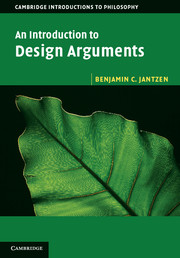Book contents
- Frontmatter
- Dedication
- Contents
- List of figures and tables
- Preface
- 1 Introduction
- 2 Preliminaries
- 3 Arguments from antiquity
- 4 Medieval arguments
- 5 The golden age of natural theology
- 6 Unusual design arguments
- 7 Hume
- 8 Paley
- 9 Darwin
- 10 Loose ends
- 11 The modern likelihood argument
- 12 Intelligent design I: irreducible complexity
- 13 Intelligent design II: specified complexity
- 14 What is complexity?
- 15 Supernatural agents and the role of laws
- 16 A brief survey of physical law
- 17 Fine tuning I: positive arguments
- 18 Fine tuning II: objections
- 19 Conclusion
- Bibliography
- Index
Preface
Published online by Cambridge University Press: 05 June 2014
- Frontmatter
- Dedication
- Contents
- List of figures and tables
- Preface
- 1 Introduction
- 2 Preliminaries
- 3 Arguments from antiquity
- 4 Medieval arguments
- 5 The golden age of natural theology
- 6 Unusual design arguments
- 7 Hume
- 8 Paley
- 9 Darwin
- 10 Loose ends
- 11 The modern likelihood argument
- 12 Intelligent design I: irreducible complexity
- 13 Intelligent design II: specified complexity
- 14 What is complexity?
- 15 Supernatural agents and the role of laws
- 16 A brief survey of physical law
- 17 Fine tuning I: positive arguments
- 18 Fine tuning II: objections
- 19 Conclusion
- Bibliography
- Index
Summary
Preface
This book is a critical survey of design arguments, attempts to infer the existence of a God or gods by demonstrating the likely role of intelligence in shaping the world of experience. By critical, I do not mean polemical. What follows is not an attempt to dismiss design arguments as categorically misguided or ill-conceived. Nor is it a religious apologetic. Rather, it is intended to be a neutral philosophical reconstruction and analysis of the entire field of design arguments advanced from the rise of Western philosophy in ancient Greece to the present day.
The treatment of this material is introductory in a couple of ways. As with any introduction to a field of study, I have sacrificed some depth in favor of breadth in order to give the reader a coherent picture of the entire landscape of the design debate. My aim is in part to provide a synopsis of a long philosophical conversation so that someone interested in working on the philosophical puzzles surrounding design arguments can jump right in. The book does not assume that the reader is familiar with the jargon of academic philosophy or has had any formal training in the analysis of arguments, and so can serve as the basis for an introductory course in philosophy or critical thinking.
- Type
- Chapter
- Information
- An Introduction to Design Arguments , pp. xiii - xviPublisher: Cambridge University PressPrint publication year: 2014

